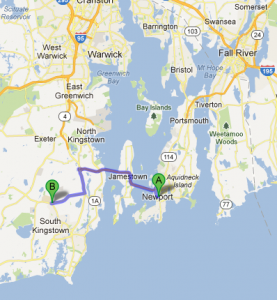A major theme of this class that has resonated in my mind is that the world is interconnected through hydrology. Every surface on our planet belongs to a watershed, or an area of land where water can drain through and end up in one place. The entire planet receives some amount of precipitation from the atmosphere each year, so of course water is a linking factor among all of Earth’s surfaces.
When learning about watersheds in class, we could not avoid the issue of pollution. There are two main sources of water pollution defined by the Clean Water Act: point and nonpoint sources. Nonpoint sources cause pollution to infiltrate land runoff, precipitation, atmospheric deposition, drainage and seepage. Point sources are easier to pinpoint, as their name explains. A point source is more tangible, like a giant factory dumping chemicals into a river…which brings me to…
Kepone! It is a toxic insecticide that was dumped into the James River from 1966 to 1975. There was a Kepone plant in Hopewell VA that caused this pollution in the James. Luckily, the EPA took care of it in 1975 as it was deemed a “Superfund Site”- an establishment releasing harmful chemicals into the environment.
Unfortunately the government cannot zap away all pollution like that. Nonpoint sources are much more difficult to eradicate. Point sources can be protested and shut down (Like when I protested Dominion Power’s non-renewable energy use this past fall with Kenta and Jenni). Nonpoint sources are much trickier.
As we learned in class, individuals live, work, and travel in watershed regions. At the same time, individuals cause pollution which has consequences on the watershed. I really enjoyed the slide on Watershed Pollution and Preservation which included the “Awareness, Appraisal, Behavior” diagram. The slide stated: “To act- People must be aware” and “People must be concerned.”
I feel like acting to reduce pollution is one thing, but maintaining an active anti-pollution lifestyle is another. It is kind of like dieting (which I hate talking about, but it’s applicable). One can say no to an unhealthy food once, but in order to maintain a healthy status, good habits need to be set in an individual. This mentality along with awareness can spread to individuals, neighborhoods, and other larger communities.
I am really sad that I missed the Henricus Park trip this past Sunday :(. I was at the A10 Track and Field Conferences in Rhode Island. Reading your syntheses, I got a little bit of an idea of how the trip was. I definitely need to talk to you guys more about it!
When I was in Rhode Island, it was blizzarding (is that a word?) the entire time. I had never seen a blizzard really my whole life. It was crazy. I was pole vaulting in this stadium that felt like a snow globe. The wind was whirling the snow around so much. It was crazy. An igloo would have been nice.
When I walked around outside, as my entire shins sank into the 20+ inches of snow, I could not help but think of—WATERSHEDS! All that snow had to melt at some time- snowmelt!–and drain into the ground and surrounding bodies of water. I do not know much about the rivers, bays and harbors of Rhode Island. But the funny thing was that between the hotel in Newport and the track in Kingston, there was a giant bridge with Jamestown Island in the middle. I certainly compared it to Virginia’s Jamestown-not very similar! I think that I can hypothesize now that the bodies of water in Rhode Island will become much fresher after all this snow melts.
This is a map of where I was in Rhode Island and its waterways!

